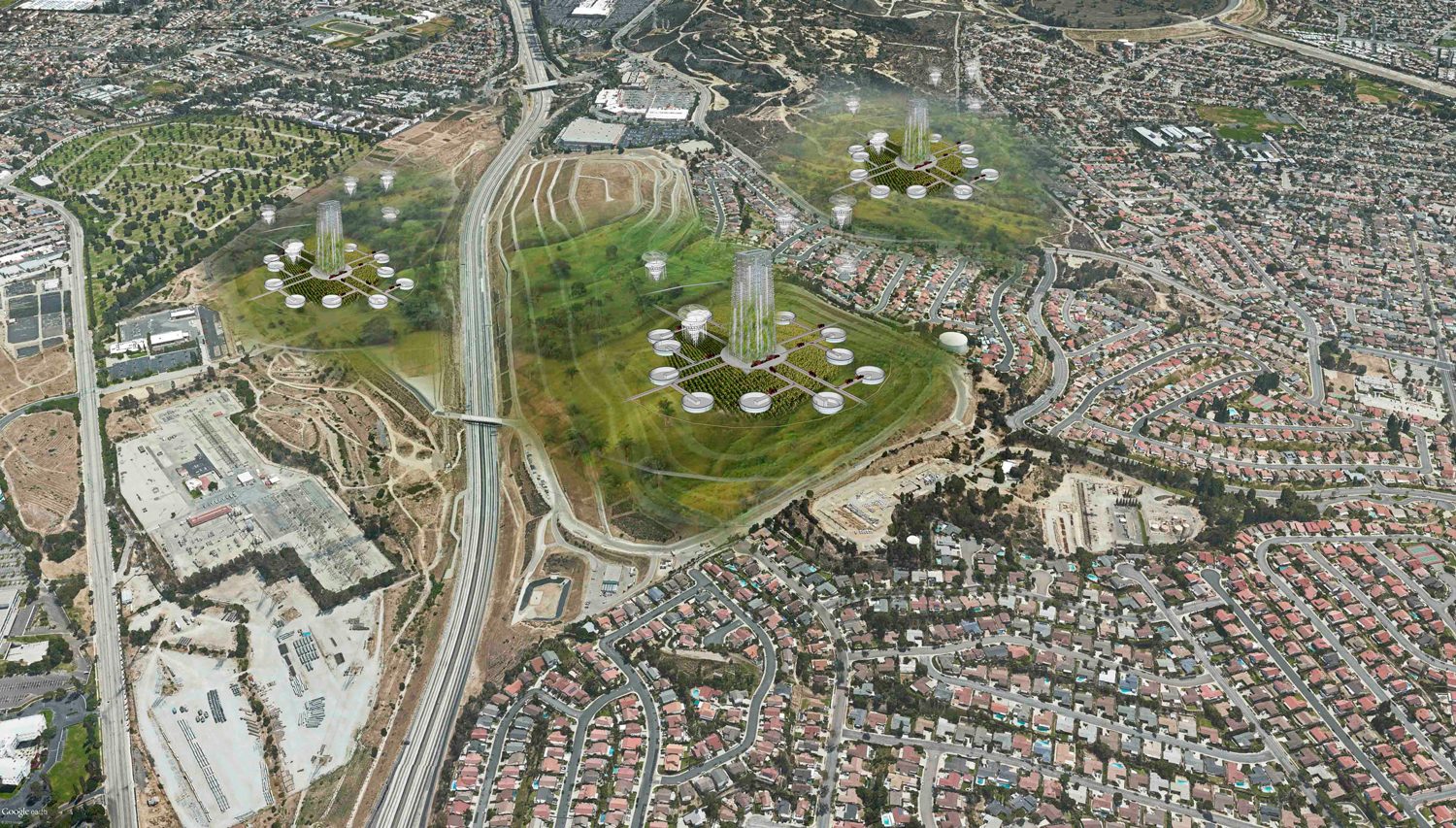Architizer’s 13th A+Awards features a suite of sustainability-focused categories recognizing designers that are building a greener industry — and a better future. Start your entry to receive global recognition for your work!
‘Vertical farms’ is a topic widely discussed in the past couple of years. It is one of those cases where architecture provides an actionable solution to wider issues that go beyond sustainability challenges, touching upon economic, political and societal aspects. Lack of sufficient food due to overpopulation, water scarcity and unexpected environmental factors are only a few of the matters vertical farms can allegedly solve.
Before discussing farming, however, let’s talk about pigs. One radical project, which addresses the wider issue of food production in cities, is Pig City by MVRDV. Conducting extensive research regarding the pork industry within the Netherlands as well as meticulous calculations on pork production in wider Europe and the grains and water necessary to support the livestock, the proposal sought to design alternative, more humane pig farms. Just for reference, in the year 2000, the average area required for each pig in organic farming was approximately 1,726 meters squared. If this standard were applied across the Netherlands, it would result in 75% of the country’s land being dedicated to such farms. In response, the proposal combines organic farming with all the associating production activities, creating an intensive concentration of farms and eliminating the need for costly and polluting transportation and distribution.
As the T?F (The Why Factory) researchers very accurately stated, “Either we become vegetarians, or we change production methods and demand humane farming procedures.” Even though Pig City examines the economic viability of biological farming, I wonder whether the answer to food scarcity and negative environmental impact, is further construction. Architecturally, the concept of a vertical farm implies “stacking”, i.e., designing a building that occupies less footprint, while at the same time houses activities that would otherwise take up a lot more space. Additionally, vertical farms are usually controlled environments, where conditions that influence food production are effectively regulated.
However, even though these new “agricultural typologies” provide an impactful solution to food challenges, they also serve and even encourage the ever-growing need for consumerism that plagues our planet. Perhaps, instead of trying to answer the question of how we can produce more food more sustainably, we need to evaluate this approach and turn towards a different paradigm.
Asian Cairns – Sustainable Farmscrapers for Rural Urbanity by Vincent Callebaut Architectures, Shenzhen, China
Food City is a book written by architect and academic C.J. Lim, originally published in 2014, that examines the reinstatement of food at the core of national and local governance. The book is split into nine chapters: Food + Business, Food + Community, Food + Culture, Food + Education, Food + Employment, Food + Energy, Food + Health, Food + Law, and Food + Transport. It provides an insight on 25 international cities, whose governance is described through the medium of food and re-evaluates the way in which cities can function spatially as well as politically. Through the book, C.J. Lim presents a speculative research study situated in the city of London. In a series of drawings, models and texts, the architect explores how a secondary infrastructure built over London can function as a living environment and a new food system.
The Food Parliament is a fictional supreme food legislation body for London and its territories, which functions as a holistic ecology that is self-perpetuating, while engaging in dialogue with traditional London. It operates under three pledges: (a) it stands as an international center of excellence for food security, (b) it encourages local communities and individuals to participate in food cultivation, processing and distribution and finally, (c) it disseminates the new notion of health, which includes food security, good health, green space and fresh air.
Through humorous illustrations and narratives, the book redefines governing bodies and political figures in an attempt to accentuate the polemic impact food has in politics and society. Some of the most notable speculative scenarios include a Ministry of Defense comprised of geese (farm animals known for their protective nature) as well as “fences” made of landscape, whose scent can keep specific insects and pesticides away. Additionally, an urban fish farm characterized as the Blue Carpet reintroduces “dreamy” traditional fishing practices, while Mr. Speaker — the figure that shouts “order, order” within the London Parliament — is tasked with cleaning the space using massive sprinkler systems that soar over the landscape. Finally, massive pyramidal structures, inspired from Westminster Hall and the coronation ceremony, become the new cultivation farms which gather seeds and water from the air, producing enough food for all the London burrows.
From the moment humans practiced agriculture and settled on land, their relationship with food became increasingly complicated, intertwining with cultural, economic and political frameworks that define societies. Food transitioned from a basic necessity to a commodity, a symbol of power, and a driver of urban development. This evolution underscores the need to rethink how food systems are integrated into the fabric of our cities and governance structures in such a way that not only sustain human life but also respect the environment and foster community resilience.
Architizer’s 13th A+Awards features a suite of sustainability-focused categories recognizing designers that are building a greener industry — and a better future. Start your entry to receive global recognition for your work!
Featured Image: GEA by Taller Proyectual


